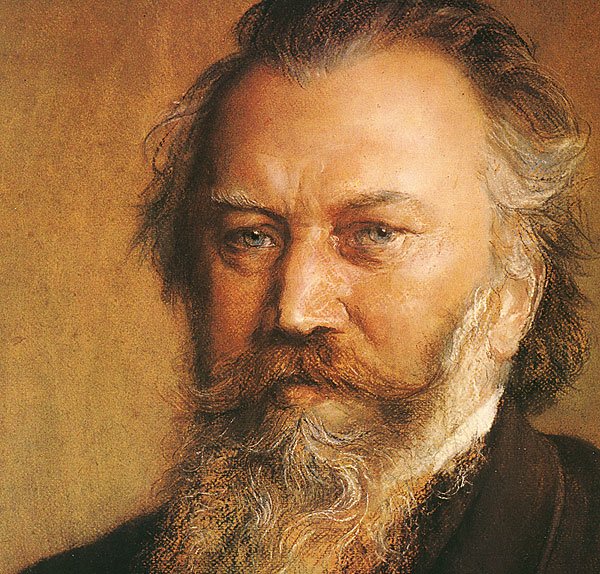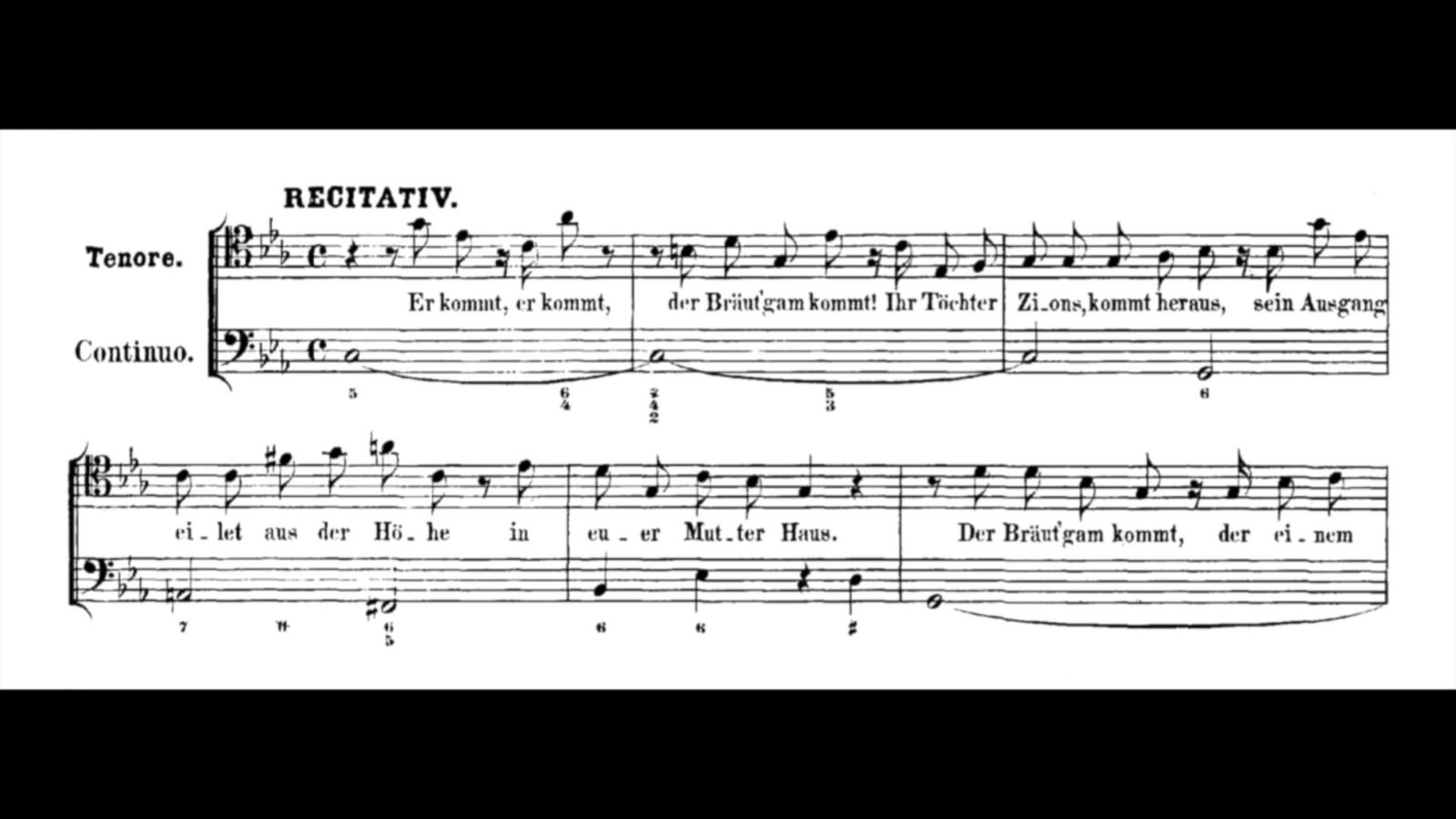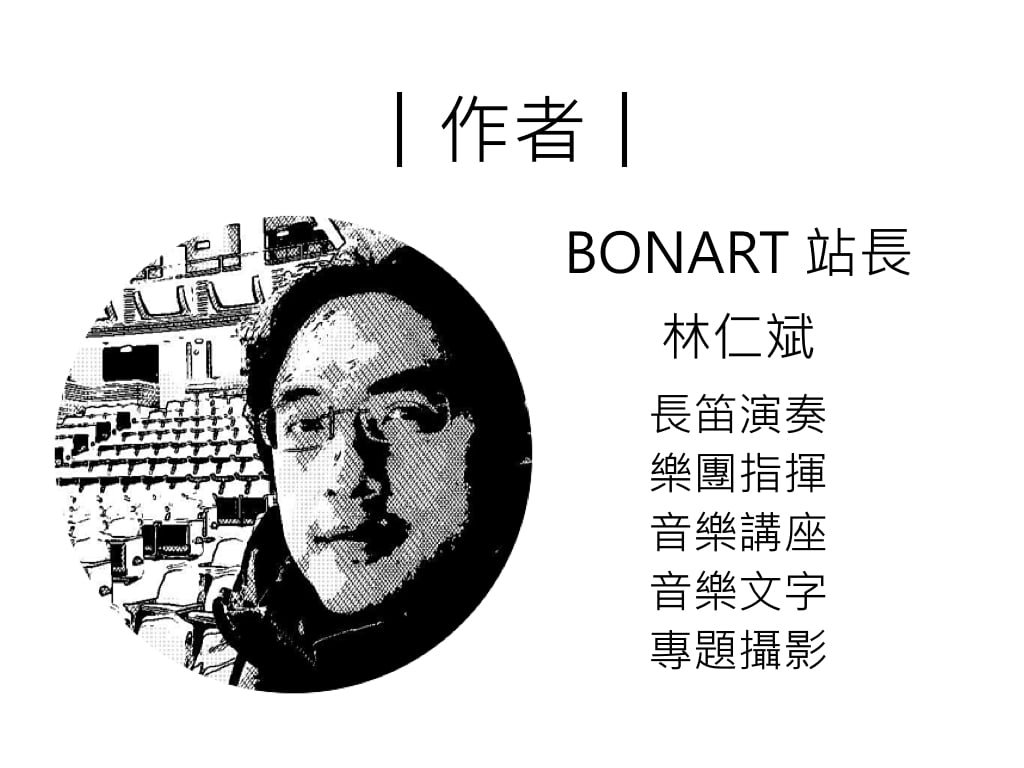【BON音樂】布拉姆斯:第四號交響曲 op.98 – 回歸虛無
Brahms: Symphony No.4 in e minor
– 資訊整理共享於網路,一起欣賞音樂與藝術之美 –
蹦藝術 | BONART
布拉姆斯第四交響曲創作於1884年~1885年的夏天,按照他的作曲慣例(度假般的放鬆心情與環境),他到了位於阿爾卑斯山旁的奧地利安靜小鎮 Mürzzuschlag,秘密地持續著工作。
美麗小鎮 Mürzzuschlag 的空拍照片
Mürzzuschlag 的市區照片
筆者註:第三號創作於1883年,正值50歲壯年。當時布拉姆斯正在著名的溫泉療養城市威斯巴登(Wiesbaden)渡假避暑,身心愉快XD,短短四個月即完成第三號交響曲。
在詭譎的19世紀浪漫時期後半,嶄新與標榜自我的作曲手法大行其道,例如相比於李斯特嶄新架構的交響詩(Symphonic poem)與華格納的樂劇(Musikdrama)裡充滿官能魅力的管弦樂法,布拉姆斯保守的作曲方式,儘管受到不少批判,但他對於調性主義與自貝多芬以降的樂曲架構、對位法與變奏思維的尊奉,讓他持續地被認為是當世德國的最偉大的作曲家,作品也不斷取得了廣泛的成功。
第四號交響曲的開頭,充滿了戀戀不捨之感,每個樂章都有自己獨特的個性,似乎沒有刻意為之後的作品佈局,而直接展現出布拉姆斯對於交響音樂寫作的純熟技巧,最終結束在華麗無比的變奏技法,音樂彷彿就這樣嘎然而止,隱伏於其中的情緒,讓熟悉布拉姆斯的聽眾,感到受這首交響曲是他邁向虛無,也是四首作品中,最深沈黑暗的交響曲。
引述布拉姆斯傳記作家馬克斯·卡爾貝克(Max Kalbeck)對當年少數欣賞首演的觀眾們的描述:「在美妙的快板之後……我多麽希望在場的人中有一個人會大聲喊出”Bravo”!」
這句話清楚地表明出當時首演帶給現場觀眾們的感受。
而布拉姆斯的知交好友,馮‧畢羅在首演前曾說過:「我剛從彩排現場回來。第四號交響曲氣勢恢宏,史無前例,獨一無二的全新作品,布拉姆斯在作品中完全展現他的能力。」
布拉姆斯第四號交響曲,也是最後一首交響曲,以他一貫嚴肅的作曲基調、驚人的樂曲複雜性與靈感迸發的結構,成為他在交響曲中的頂峰之作,也是他告別交響曲的最後之作,聽到此曲時,總感嘆布拉姆斯雖停筆於第四號,但如能再精心妙筆,續添第五號、第六號交響曲,不知該有多好~
首演
1885年10月25日在邁寧根(Meiningen)進行首演時,觀眾似乎完全理解了這部作品,並以熱烈的掌聲迎接第四號交響曲,從首演起一直是交響樂曲目的基石。
傳承與展望
這是福特萬格勒於1943年指揮柏林愛樂的錄音版本,在早期錄音中值得一聽,理解從19世紀浪漫一路傳承至20世紀上半的布拉姆斯交響曲風格。
Brahms – Symphony n°4 – Berlin / Furtwängler 1943
Furtwangler rehearsals Brahms Symphony No.4 in 1948, London
延伸閱讀
樂譜版本欣賞
Composed: 1884-85
Conductor: Simon Rattle / Berlin Philharmonic Orchestra
| 00:00 1. Allegro non troppo (E minor)
13:23 2. Andante moderato (E major) 25:37 3. Allegro giocoso (C major) 32:04 4. Allegro energico e passionato (E minor) |
每一個樂章都帶有作曲家個性的獨特印記。
Johannes Brahms – Symphony 4 (full analysis)
第一樂章
奏鳴曲式.包括精彩的樂曲分析
| 呈示部(1-144) | 發展部(145-246) | 再現部(247-393) | 尾聲(394-End) |
| 主題1(小調) | 主題發展 | 第一主題變形再現 | 段落Q |
第一主題從樂曲開始即出現,布拉姆斯以三度音程而發展的E 小調主題開始(I-V),不但勾勒出第一樂章的色彩,也為第一樂章提供了結構和動機基礎。
這段開始的音樂動機,與巴哈清唱劇BWV140裡的音樂,像極了(5’16”):
音樂欣賞(巴哈清唱劇BWV140)(5’16”起)
而布拉姆斯再後來所寫的嚴肅歌曲裡,也引用的相似的音樂動機,但卻配上了「噢!死亡、噢!死亡」的歌詞…
音樂欣賞(12’04”起)
從伴奏素材看來,從頭到尾都有一種明顯的動盪感,最後的小調終止與節奏,更進一步令人感受到悲慘的、甚至是宿命論的氣氛。
第二樂章
E大調,6/8拍
| 前奏 | 第一主題 | 第二主題 | 過度樂段 | 再現部 | 尾聲 |
| 1-4 | 5-12 | 41-49 | 50-63 | 64-105 | 106-End |
第二樂章以簡短、憂鬱的號角開場,讓位於靜靜伴奏的木管,這也是作曲家所有主題中最可愛的主題之一,也是最經典的交響樂章。透過使用不在原調性裡,借來的降六度和七度音階賦予了特別的震撼力。在本樂章中,布拉姆斯設計的樂曲內容逐漸發展,終成高聳入雲的抒情詩句而逐漸消失在空靈的寧靜中。
第二樂章精彩解析
第三樂章
奏鳴曲式.C大調
| 呈示部 | 發展部 | 再現部 | 尾聲 |
| 第一主題 1-18 | 主題再現與發展
89-198 |
199-281 | 282-End |
第三樂章是充滿活力、彷彿活力無限的雙人舞,在布拉姆斯生前也已經非常受歡迎,以至於觀眾不斷要求安可此樂章。
第四樂章
變奏曲式
| 第一部分 | 第二部分 | 第三部分 | 第四部分 | 尾聲 – Piu Allegro |
| 0:00 – Theme
0:13 – Var.1 Theme is broken up between horns and strings. 0:25 – V.2 The lower strings play the theme in syncopation, above which the winds begin a smooth, wondering line. 0:40 – V.3 The strings now play the theme on the strong beats, while the wondering line is now detached and more threatening. 0:50 – V.4 The first violins begin a broad, arching melody above syncopated off-beat accompaniment. The theme is in the lower strings and bassoon, played in broken octaves. 1:06 – V.5 The strings elaborate on the broad melody. The winds enter with embellishments in clashing polyrhythms. 1:18 – V.6 The contour of the broad melody is changed so that it arches downward. The accompaniment from winds is sparser. 1:31 – V.7 The violins, again taking the lead, introduce sharp dotted figures. The woodwinds provide responses. The theme in the bass also uses these dotted rhythms. 1:45 – V.8 The violins play rapid oscillation figures, ending with cascading triplet arpeggios. 1:59 – V.9 Essentially an embellished, fierier version of the previous variation. 2:14 – V.10 Very softly, the strings and winds pass the theme between each other. The music starts to lose its edge. 2:32 – V.11 Above the chords of variation 10 (now played in broken octaves by lower strings), a beautiful melody forms for a brief moment, before descending scales take us to the next variation. |
2:51 – V.12 The theme is embedded in the long and beautiful, but somewhat halting flute melody. Other instruments provide short off-beat accompanying chords.
3:28 – V.13 The first variation in a major key. The soft, detached off-beat chords continue, as lines from the flute solo are transformed and passed around the orchestra. The notes of the theme are buried inconspicuously in the musical texture. 4:01 – V.14 The trombones transform the theme into a solemn chorale, broken up by expressive silences. 4:36 – V.15 The chorale continues, now with fuller orchestration. |
5:10 – V.16 The previous variation is cut off mid-sentence, as the theme tragically reappears in minor in its most threatening form.
5:21 – V.17 The winds play agitated two-note phrases beginning on the weak beats. The theme is in the string tremolos. 5:31 – V.18 The string tremolos continue, but the detached phrases are replaced with broad swelling gestures. 5:42 – V.19 Strings and horns now alternate with woodwinds on detached, angular lines. 5:52 – V.20 The previous variation is developed into a line with feverish triplet motion and disorienting syncopation. 6:04 – V. 21 The tension increases greatly here, as the flutes and violins play sweeping upward scales against syncopated horn blasts that obscure the meter. 6:14 – V.22 The dynamics quiet down to pianissimo, as an oscillating triplet figuration passes through the orchestra. The winds play descending syncopated chords. The theme is nowhere to be found. 6:24 – V.23 The relation of the previous variation to the theme is revealed, as the theme distinctly reappears in the horns over a more agitated version of the oscillating triplet figuration. |
6:36 – V.24 The theme is broken up between horn blasts and violins, which hang on to the triplet figuration from the previous variations. The structure is similar to variation 1 but in a drastically different mood.
6:46 – V.25 This variation is similar to variation 2, but again, much more powerful and dramatic. The wondering line is transferred to forceful violins playing in tremolo, while the rest of the orchestra outlines the theme with off-beat triplets. 6:58 – V.26 Similar to variation 3, but in a more sombre state. The oscillating triplets remain in the strings, with the brass, and later winds taking over the melody. 7:10 – V.27 The music once again manages to arrive at a major tonality. The wind section plays long two-note descends harmonized in thirds, with decorative accompaniment from the strings. 7:21 – V.28 The long two-note descends blossom into a beautiful flowing melody, with triplet accompaniment. 7:32 – V.29 This variation marks the start of the music’s tragic turn back to minor. The strings pluck a series of descending thirds on weak beats, while the rising gestures in the winds further distort the bar line. 7:43 – V.30 The descending thirds now take the foreground, played loudly on the strong beats, and in canonic imitation between violins and lower strings. The winds take over the offbeat accompaniment. |
8:01 – The coda marks the point of no return. The tempo speeds up, with the theme ripping the music apart with biting dissonances and cascading string arpeggios. Diminished (sped-up) versions of the theme appear in exhilarating sequences, before a strong V – I cadence affirms the key of E minor, tragically ending the movement. |
最後一個樂章可能是第四號交響曲,除了第一樂章外最引人注目的一段:第四樂章採用了巴洛克時期以來古老的變奏曲是「夏康舞曲」(Chaconne ),也有人認為此變奏曲式為「帕薩加里亞舞曲」(Passacaglia)。
布拉姆斯此「夏康舞曲/帕薩加里亞舞曲」樂章的主題,實際上是來自巴哈清唱劇第150號所使用的主題,稍加以輕微修改。
儘管主題看似簡單——因為其實主題與和聲之設計,本質上是從主音到主音的一個上升的音階片段,然後再回到主音——布勃拉姆斯使用這個簡單的骨架作為後續越來越複雜的主題和聲框架的基礎。
和聲總譜看第四樂章主題:
管弦總譜看第四樂章主題:
第四樂章:欣賞包含樂段分析
Brahms – Symphony no.4 (movement 4): Score and Analysis
從第一個變奏開始,陸續布拉姆斯共寫了大約30段變奏,非常驚人。
這些變奏一段段地增強織度與架構的複雜,並增加了樂曲強度;彷彿不屈不撓地挑戰過去未有的變奏技法,帶著些許受到壓迫的憂鬱感病並持續不段發展。
第四樂章最後的變奏,直接進入尾聲終止式,回到e小調,首尾呼應,並與第一樂章帶來的離別、可能的的悲劇與憂鬱呼應,似乎在這深深的黑暗中,逐漸地步向虛無…
【BON好片】精彩樂曲介紹
巴哈:b小調彌撒⟨信經⟩(Credo) – ⟨釘在十架上⟩(Crucifixus)
| 原 文 歌 詞 |
Crucifixus etiam pro nobis,
Sub Pontio Pilato,
Passus et sepultus est.
|
| 中 文 歌 詞 |
祂為了我們被釘在十字架上
在般雀比拉多掌權之時
受難而被埋葬
|
⟨釘在十架上⟩(Crucifixus)
半音音型運用與分析
Passacaglia for Violin and Cello 帕薩卡利亞舞曲
G. F. Handel (1685-1759) / Johan Halvorsen (1864-1935)
作曲家 : 韓德爾(1685-1759) / 哈佛森(1864-1935)
謝謝您~來到蹦藝術
認識蹦藝術的幾個方法:
1. 加入蹦藝術群組
實體與線上音樂講座訊息、各種音樂分享、優質音樂會折扣碼、精彩藝文旅遊行程…,好康優惠不漏接
加入方式:
請先聯繫蹦藝術林仁斌老師本人,由林老師協助加入專屬課程群組。
https://line.me/ti/p/LB1ro0P0AU
2. 聆聽蹦藝術 – Podcast
蹦藝術Podcast 一鍵通:https://linktr.ee/bonart
3. 贊助蹦藝術(單次或定期定額贊助)
從製播節目到網頁文章撰寫、網站維護,都需要經費,更需要您的贊助
無論是單次贊助,或者定期定額贊助,蹦藝術都感謝您對我們的支持
開卷蹦藝術.享受美好閱讀時光
 一杯咖啡.一點心意.支持蹦藝術
一杯咖啡.一點心意.支持蹦藝術
各類合作提案,聯繫方式:
*手機:0917.670.518
*Line:https://line.me/ti/p/LB1ro0P0AU
*E-mail:jenpin888@gmail.com
更多音樂新知
2025-05-04
受保護的內容: 【BON音樂】林仁斌談2025年荷蘭阿姆斯特丹《馬勒音樂節》:馬勒《大地之歌》”Das Lied von der Erde”
蹦藝術林仁斌老師將以2025年歐洲最盛大之荷蘭阿姆斯特丹馬勒音樂節為緯,每一曲交
2025-05-04
受保護的內容: 【BON音樂】林仁斌談2025年荷蘭阿姆斯特丹《馬勒音樂節》:馬勒《大地之歌》”Das Lied von der Erde”
蹦藝術林仁斌老師將以2025年歐洲最盛大之荷蘭阿姆斯特丹馬勒音樂節為緯,每一曲交
2025-05-04
受保護的內容: 【BON音樂】林仁斌談2025年荷蘭阿姆斯特丹《馬勒音樂節》:馬勒《大地之歌》”Das Lied von der Erde”
蹦藝術林仁斌老師將以2025年歐洲最盛大之荷蘭阿姆斯特丹馬勒音樂節為緯,每一曲交


















[…] 【BON音樂】布拉姆斯:第四號交響曲 op.98 – 回歸虛無 […]
[…] 【BON音樂】布拉姆斯:第四號交響曲 op.98 – 回歸虛無 […]
[…] 【BON音樂】布拉姆斯:第四號交響曲 op.98 – 回歸虛無 […]
[…] 【BON音樂】布拉姆斯:第四號交響曲 op.98 – 回歸虛無 […]
[…] 【BON音樂】布拉姆斯:第四號交響曲 op.98 – 回歸虛無 […]